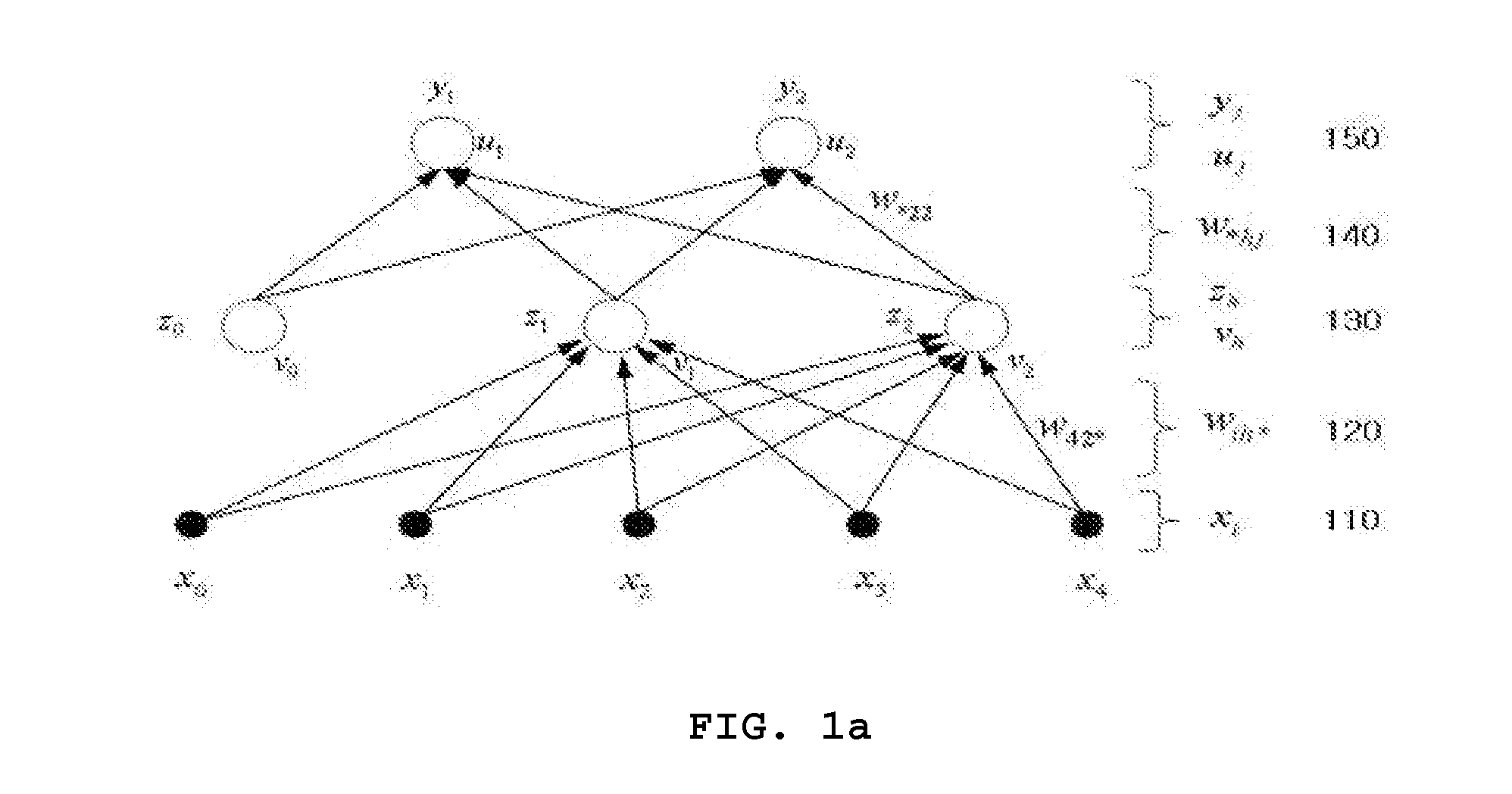Separate Learning System and Method Using Two-Layered Neural Network Having Target Values for Hidden Nodes
a learning system and neural network technology, applied in the field of separate learning system and method using a two-layered neural network having target values for hidden nodes, can solve the problems of unexpected stoppage of learning process, convergence problems of backpropagation algorithm, and inability to guarantee the convergence of network training, etc., to achieve small storage space, reduce computational work, and high convergence speed
- Summary
- Abstract
- Description
- Claims
- Application Information
AI Technical Summary
Benefits of technology
Problems solved by technology
Method used
Image
Examples
experimental examples
[0095]In these experimental examples, in order to verify the performance of the separate learning method proposed in the present invention, experiments were conducted using a terminal having an AMD XP 2600+ 2.0 GB CPU and 512 MB Random Access Memory (RAM), using three types of data including 1) synthetic data, 2) Wisconsin breast Data, and 3) iris Data.
[0096]First, after distances d between respective input vectors and center vectors in all classes had been calculated to find the closest class and the next closest class, a desired class was determined using a given probability value. Then, experiments were conducted 270 times for each of the case where the number of hidden nodes increased, and the cases where learning rate and momentum increased from 0.1 to 0.9.
[0097]In this case, an input vector X, the number of input nodes n, and a probability variable a were input, each input pattern value was set to an arbitrary value between −1 and 1, the number of input patterns was set to 10 ...
first experimental example
[0100]A first experimental example was conducted to compare the performance of backpropagation learning and separate learning with each other when the learning rate was fixed at 0.3, and the number of hidden nodes was increased from 3 to 20.
[0101]First, the experimental results of backpropagation learning and separate learning according to an increase in the number of hidden nodes are described. As shown in FIGS. 5A to 5C, when the number of hidden nodes was increased to 10 or above, backpropagation learning did not converge, but the mean square error did not decrease below 0.5. The reason for this is that an increase in the number of hidden nodes increases the complexity of a network, thus generating a large number of local minima.
[0102]Meanwhile, separate learning using synthetic data exhibited a high convergence rate regardless of an increase in the number of hidden nodes, so that separate learning was relatively free from the problem of local minima. In the case of learning time...
second experimental example
[0108]A second experimental example is an experiment for determining whether the a breast tumor is a benign tumor or a malignant tumor using Wisconsin breast cancer data and 9 variables. The number of data samples was 457, and tumors were classified into two classes of benignancy and malignancy. Accordingly, an increase in the number of hidden nodes may decrease overall performance.
[0109]That is, as the results of experiments, conducted while changing the number of hidden nodes to two and three, better performance was obtained when the number of hidden nodes was fixed at two. Accordingly, the experiment was conducted after the number of hidden nodes was fixed at two.
[0110]The experimental results are described below. As shown in FIGS. 8A to 8C, when momentum was fixed at 0.1 and a learning rate was increased from 0.1 to 0.9, separate learning was superior in both convergence rate and learning time to backpropagation learning at a low learning rate. That is, as the learning rate incr...
PUM
 Login to View More
Login to View More Abstract
Description
Claims
Application Information
 Login to View More
Login to View More - R&D
- Intellectual Property
- Life Sciences
- Materials
- Tech Scout
- Unparalleled Data Quality
- Higher Quality Content
- 60% Fewer Hallucinations
Browse by: Latest US Patents, China's latest patents, Technical Efficacy Thesaurus, Application Domain, Technology Topic, Popular Technical Reports.
© 2025 PatSnap. All rights reserved.Legal|Privacy policy|Modern Slavery Act Transparency Statement|Sitemap|About US| Contact US: help@patsnap.com



